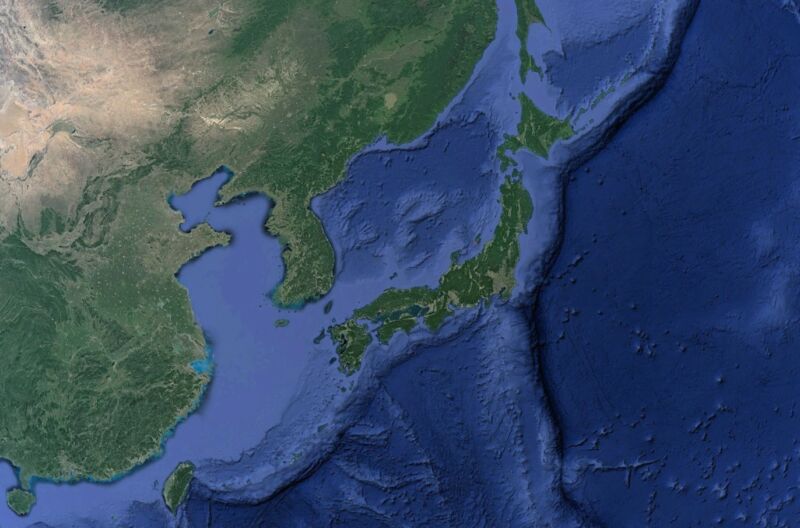Volcanoes where they shouldn’t be? Maybe it’s a mantle sponge

Enlarge (credit: Google Earth)
The location and characteristics of most of the world's volcanoes can be explained with just two recipes for magma production. The melting point of rock depends on pressure, so hot mantle rock flowing up toward the surface can melt as the pressure drops. The addition of water lowers the melting point, too, so water-laden seafloor plates can trigger melt as they sink down into the Earth at subduction zones. These two facts generally explain both volcanoes along plate boundaries-like the Pacific Ring of Fire or the mid-ocean ridges-and those at hot spots like Hawaii and Yellowstone.
But when looking back through Earth's history, there are plenty of volcanic weirdos that don't seem to line up with the figures in a textbook. There are volcanoes in the interior of the Western US, for example, far from any relevant plate boundary or hotspot. A new study by Jianfeng Yang and Manuele Faccenda of the University of Padua examines another difficult-to-explain set of past eruptions, both east and west of Japan.
Oddities near JapanJapan sits on a subduction zone, with the Pacific seafloor sinking downward beneath the island. That's the cause of both Japan's dangerous earthquakes and its volcanic peaks like Mt. Fuji. But a thousand kilometers to the west, in northeast China, there are remnants of old volcanism. And 600 kilometers to the east, there are more recent basalt seamounts at the bottom of the ocean.
Read 9 remaining paragraphs | Comments